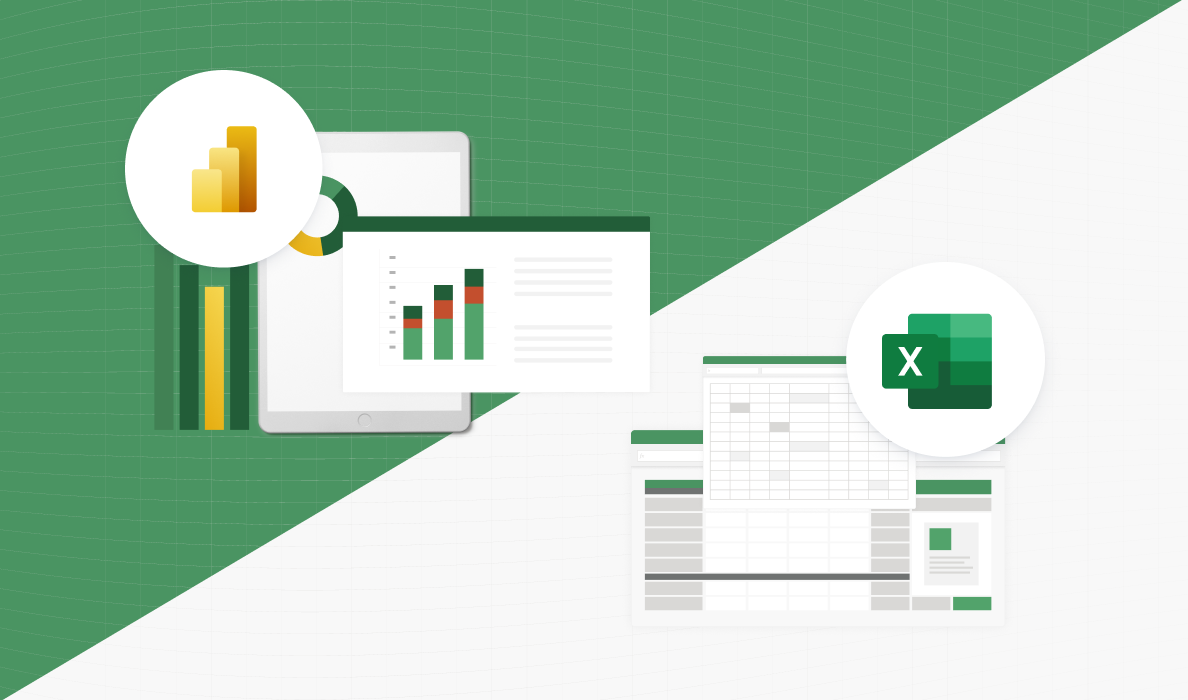
Microsoft Excel and Power BI are two of the business world's most used and most powerful data analytics tools. Today, you'd be hard pressed to find a business that doesn't use Excel in some capacity, and Power BI owns more than a third of the data analytics market.
In the FP&A world, debate rages on about which tool is better and in this guide, we'll get to the bottom of it (spoiler alert: the answer is both).
First, we'll cover features of Excel vs. Power BI in seven key areas. Then, we'll dive into how you can leverage both tools as complementary solutions that enable data-driven processes and decision making across your organization.
If we're talking winners, Power BI comes out on top here. It has a much larger capacity for handling large datasets than Excel, and it can connect to multiple data sources to automate the collection and analysis of separate datasets in a centralized place.
Excel, on the other hand, is more limited in its ability to integrate with other data sources and has no standalone automation capabilities.
This one's a win for Excel. It offers greater flexibility to manipulate data in a variety of formats, perform searches, do calculations and apply mathematical formulas. While Power BI offers powerful visualizations and sophisticated analysis capabilities, actual data is much more static once it's on the platform.
Power BI's cloud-based platform and report publishing capabilities give it the edge over Excel when it comes to data sharing. Excel also requires sharing the actual source data along with dashboards and visualizations, while Power BI allows easy sharing of reports separate from their original data.
Power BI also offers the huge advantage of real-time visibility (more on that later) and shared dashboards for anytime data accessibility.
Data visualization has become an essential capability for contextualizing data and powering greater organizational data literacy--the ability to use data insights to make decisions.
Excel and Power BI are both designed to empower data visualization, but if we're really comparing, Power BI is a clear winner. The options for visualizing data are simply much greater and combined with its ability to collect data across sources, Power BI can support a much wider range of datasets and types of analyses.
Power BI also allows you to add custom third-party visuals through its marketplace feature, while Excel is limited to its internal program options.
Here's a helpful walkthrough of some powerful Power BI visualizations that go beyond the capabilities you'll find in Excel:
Excel is the ideal tool for tabular reporting, a common format used in FP&A. While Power BI has some tabular capabilities, they're much more limited and less flexible than what you can do in Excel.
Plus, given that tabular is Excel's primary format, it's the most sensible tool to use if you're doing a strictly tabular analysis and/or prefer to view your data that way.
Automation has become an essential part of doing business--it's required to keep up with the sheer amount of data companies now use on a daily basis and the increasingly rapid pace of business operations. Excel, as we've mentioned, is quite limited in its automation and alert capabilities.
Power BI, on the other hand, executes automatic updates when source data changes and can send automatic, custom-set alerts about changes to important KPIs and metrics.
Power BI comes out on top when it comes to shared visibility--and this is one of the reasons it has become such an essential tool for businesses in every industry. Especially given the rise of remote and hybrid work in recent years, organizations need a cloud-based platform where employees and stakeholders can view shared data in real time.
Furthermore, shared visibility of critical data builds common understanding across finance and FP&A teams, as well as other business units, which powers a culture of greater collaboration across the organization.
This is a question we hear all the time from clients and one that you've probably heard too as an FP&A professional. Most often, it comes in the following form: "Is Power BI better than Excel?"
While we're not surprised with the question--Power BI certainly aligns more with trends such as cloud operations, AI and use of data visualizations--it's important to note that Power BI and Excel do not have to compete.
In other words: You don't have to choose one or the other.
In fact, smart FP&A teams use both tools in a complementary way. For example, you can leverage data manipulation capabilities in Excel, then upload your datasets to create powerful visualizations in Power BI. You can use Excel for tabular reporting, then view multiple worksheets in a single interface in Power BI.
Finally, you can use a complete planning platform, such as Vena, to access both of these tools (and others) in totally seamless, integrated ways for powerful analysis.
Did you find this comparison helpful? If so, you might enjoy this related content:
Nicole Diceman is Director, Product Marketing at Vena. With a proven track record of driving product strategy and direction, she is heavily involved in driving new product ideas and development efforts and is closely aligned with customer needs and requirements. With her extensive knowledge and experience in product marketing, FP&A and the Vena platform itself, Nicole is a regular contributor to the Vena blog and often speaks at virtual and in-person events to share her ideas. A powerful advocate for product marketing innovation, Nicole is always on the lookout for creative new ways to bring additional value to Vena customers.
